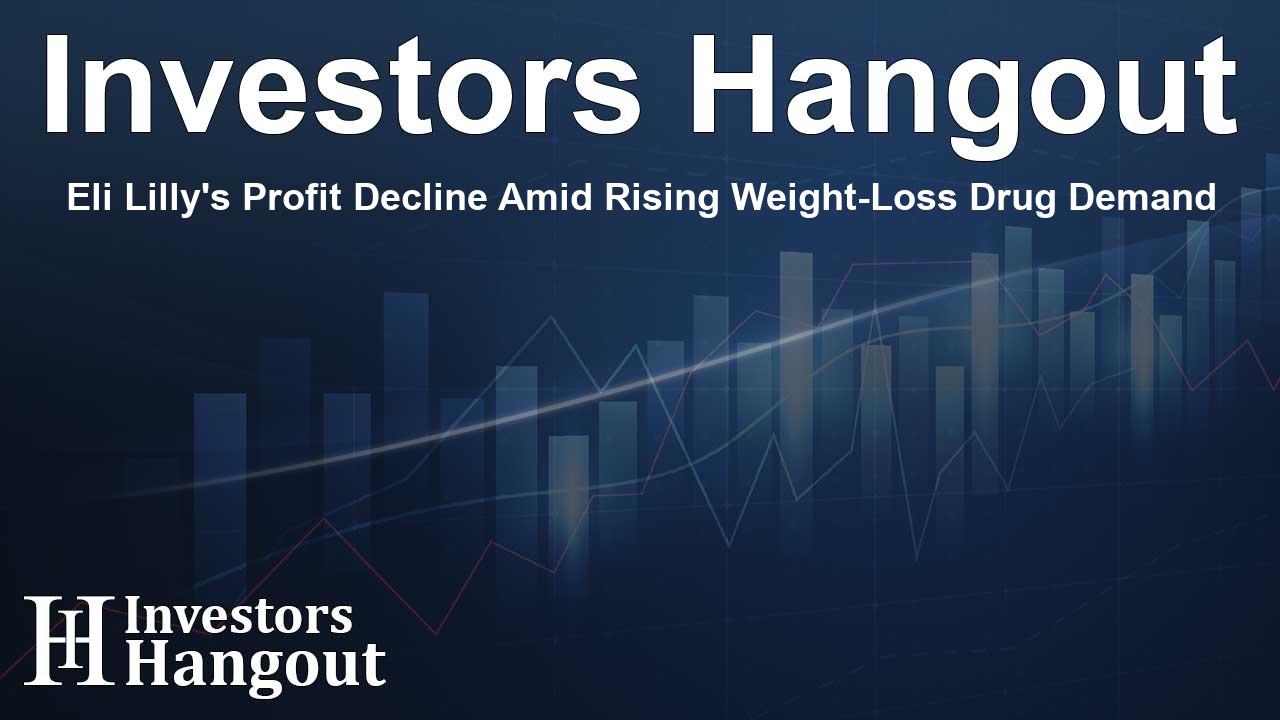Eli Lilly's Profit Decline Amid Rising Weight-Loss Drug Demand

Eli Lilly's Third-Quarter Performance Overview
Eli Lilly (NYSE: LLY) faced challenges in the third quarter, reporting lower-than-expected profits despite a significant rise in demand for its widely popular weight-loss medication. The company generated earnings of $1.18 per share on an adjusted basis for the quarter that ended on September 30. Analysts had anticipated a higher profit of around $1.47 per share based on market estimates.
Impact of Increased Costs on Profitability
The shortfall in earnings can largely be traced back to rising manufacturing expenses and costs associated with acquisitions. As Eli Lilly strives to enhance its production capabilities to meet growing demand, these costs are starting to take a toll on the company’s bottom line. The increase in operational costs comes at a time when the market has exhibited strong interest in its weight-related medication, further complicating the financial landscape.
The Growing Popularity of Weight-Loss Drugs
Weight-loss drugs have become increasingly popular in recent years, with many consumers actively seeking effective solutions for weight management. Eli Lilly's product, in particular, has drawn substantial attention, creating a challenging situation where high demand coincides with financial pressures from production costs.
Market Reactions and Future Expectations
Strategic Moves for Improvement
Eli Lilly is likely examining various strategies to mitigate these rising costs while exploring opportunities for enhanced profitability. This may include investing in new manufacturing technologies or seeking additional cost-saving measures across its operations. The goal is to balance the high demand with sustainable profit margins as the company moves forward.
Conclusion: Navigating Challenges Ahead
In conclusion, while Eli Lilly's presence in the weight-loss industry is stronger than ever, the company is confronted with significant obstacles challenging its profitability. By addressing the issues related to rising costs and optimizing its production capabilities, Eli Lilly has the potential to turn this situation around, aligning its financial performance with its product demand.
Frequently Asked Questions
What caused Eli Lilly to miss its profit estimates?
Eli Lilly missed its profit estimates mainly due to increased manufacturing and acquisition-related costs impacting its bottom line.
How much did Eli Lilly earn per share in the third quarter?
The company reported earnings of $1.18 per share on an adjusted basis for the quarter.
What was the analysts’ estimated earnings for Eli Lilly?
Analysts had forecasted earnings of $1.47 per share for the quarter.
Why is the demand for weight-loss drugs increasing?
The popularity of weight-loss medications has surged as more consumers seek effective solutions for managing their weight and improving their health.
What is Eli Lilly doing to address rising costs?
Eli Lilly is likely exploring various strategies, including investing in new technologies and implementing cost-saving measures to manage its rising operational costs.
About Investors Hangout
Investors Hangout is a leading online stock forum for financial discussion and learning, offering a wide range of free tools and resources. It draws in traders of all levels, who exchange market knowledge, investigate trading tactics, and keep an eye on industry developments in real time. Featuring financial articles, stock message boards, quotes, charts, company profiles, and live news updates. Through cooperative learning and a wealth of informational resources, it helps users from novices creating their first portfolios to experts honing their techniques. Join Investors Hangout today: https://investorshangout.com/
Disclaimer: The content of this article is solely for general informational purposes only; it does not represent legal, financial, or investment advice. Investors Hangout does not offer financial advice; the author is not a licensed financial advisor. Consult a qualified advisor before making any financial or investment decisions based on this article. The author's interpretation of publicly available data shapes the opinions presented here; as a result, they should not be taken as advice to purchase, sell, or hold any securities mentioned or any other investments. The author does not guarantee the accuracy, completeness, or timeliness of any material, providing it "as is." Information and market conditions may change; past performance is not indicative of future outcomes. If any of the material offered here is inaccurate, please contact us for corrections.








